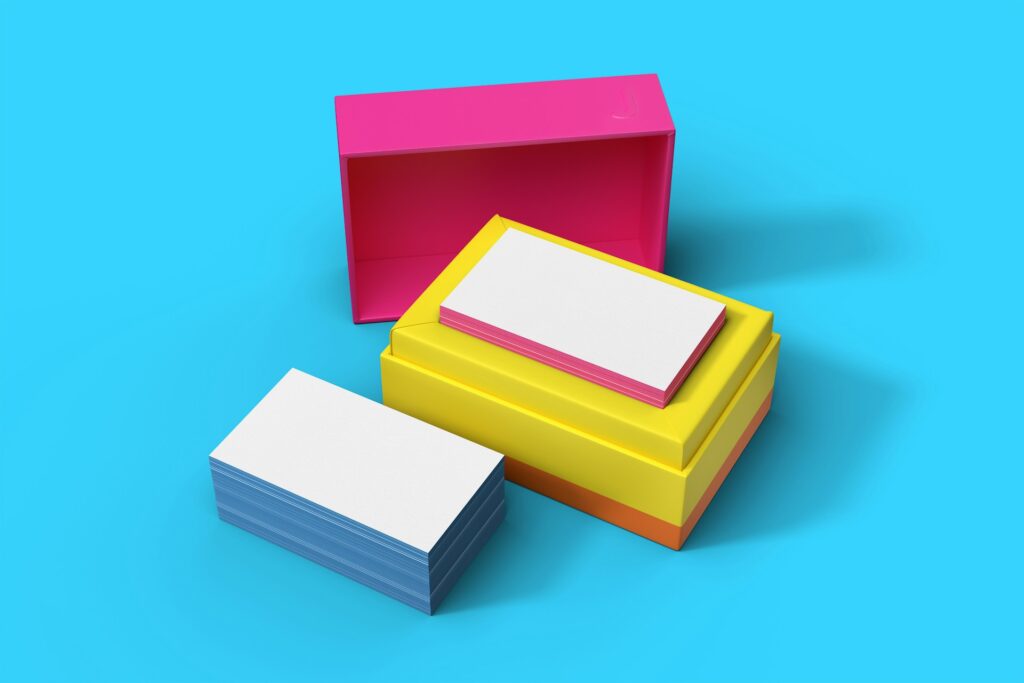
How to Print Business Cards: A Step-by-Step Guide
Share:
Common Questions and Concerns
- How much does it cost to print business cards?
- What materials and printers do I need?
- How do I design a professional-looking business card?
- Where can I find high-quality templates?
- Can I print business cards at home, or should I use a printing service?
If you’re looking to start a business or just need professional-looking cards, this guide will help you print business cards efficiently, whether you’re doing it at home or through a printing service.
1. Designing Your Business Card
A good business card design makes a lasting impression. Here’s how to do it right:
- Choose the right size – Standard business cards are 3.5 x 2 inches.
- Keep it simple – Too many details can clutter the design.
- Use high-quality images and logos – Blurry images make your card look unprofessional.
- Pick readable fonts – Stick to professional fonts like Helvetica, Arial, or Times New Roman.
- Include only essential details – Name, contact number, email, website, and a tagline (if necessary).
- Use high-resolution graphics – Ensure designs are at least 300 DPI for sharp printing.
Where to Get Business Card Templates
If you don’t want to start from scratch, you can get templates from The Ultimate Business Starter Pack. This pack gives you access to over 10,000 original designs across various categories, from anime to professional layouts. You can print them on business cards, T-shirts, mugs, and more!
2. Choosing the Right Printing Method
Option 1: Print at Home
- Best for small batches.
- Requires a good-quality inkjet or laser printer.
- Use cardstock paper (preferably 300-350 GSM).
- Print using CMYK color mode for accurate colors.
- Allow ink to dry before cutting.
Option 2: Use a Professional Printing Service
- Ideal for large batches.
- Higher quality finish with UV coating, matte, or glossy options.
- More customization: embossed text, foil stamping, rounded corners.
- Saves time and effort.
3. Printing on the Right Material
Your business card should feel premium. Here are some options:
- Standard cardstock (300-350 GSM) – Most common, durable, and affordable.
- Linen or textured paper – Adds a sophisticated touch.
- Plastic or metal cards – Unique but costlier.
- Recycled paper – Eco-friendly option.
4. Cutting and Finishing Touches
If you print at home, you’ll need a precise way to cut the cards:
- Use a paper trimmer or guillotine cutter for straight edges.
- Avoid using scissors unless you want uneven edges.
- Rounded corner punches can give a professional look.
For a polished touch, consider lamination or spot UV coating to make your cards stand out.
5. Where to Get Your Business Cards Printed
If you prefer professional printing, here are some places to check:
- Local print shops (supporting small businesses!)
- Online printing services like Vistaprint, Moo, or Printify
- Specialty shops offering unique finishes and card materials
6. Tips for Making an Impact with Your Business Card
- Hand them out strategically – Networking events, trade shows, and meetings.
- Always carry a few – You never know when you'll meet a potential client.
- Make it memorable – Use a QR code linking to your website or portfolio.
- Keep them clean – No one wants a crumpled or dirty card.
Final Thoughts
Printing business cards doesn’t have to be complicated. Whether you do it yourself or use a printing service, a well-designed card helps you make a lasting impression.
Want high-quality, ready-to-use templates? Check out The Ultimate Business Starter Pack for access to over 10,000+ inspired designs that you can print not just on business cards, but also T-shirts, mugs, notebooks, stickers, and more!
Got questions? Drop a comment or send a message. Let’s get those business cards printed!


